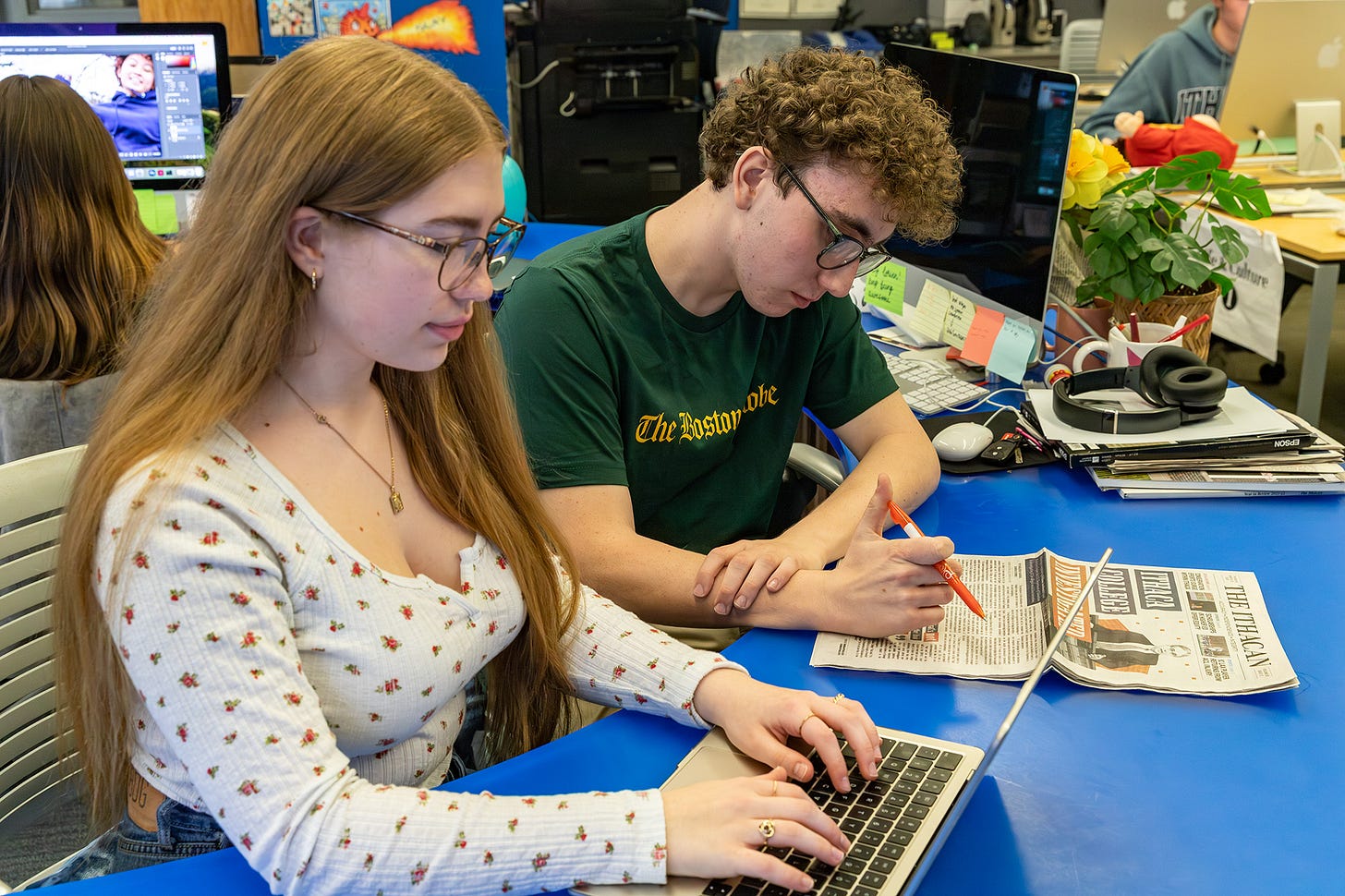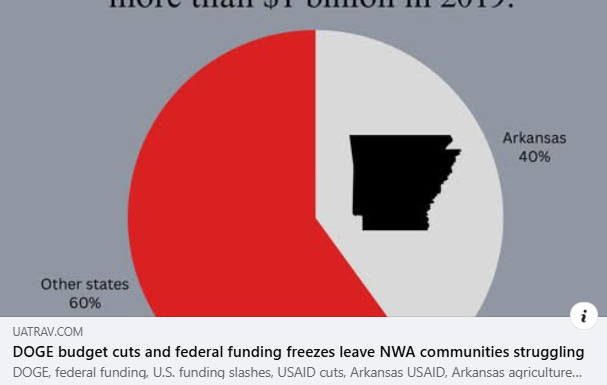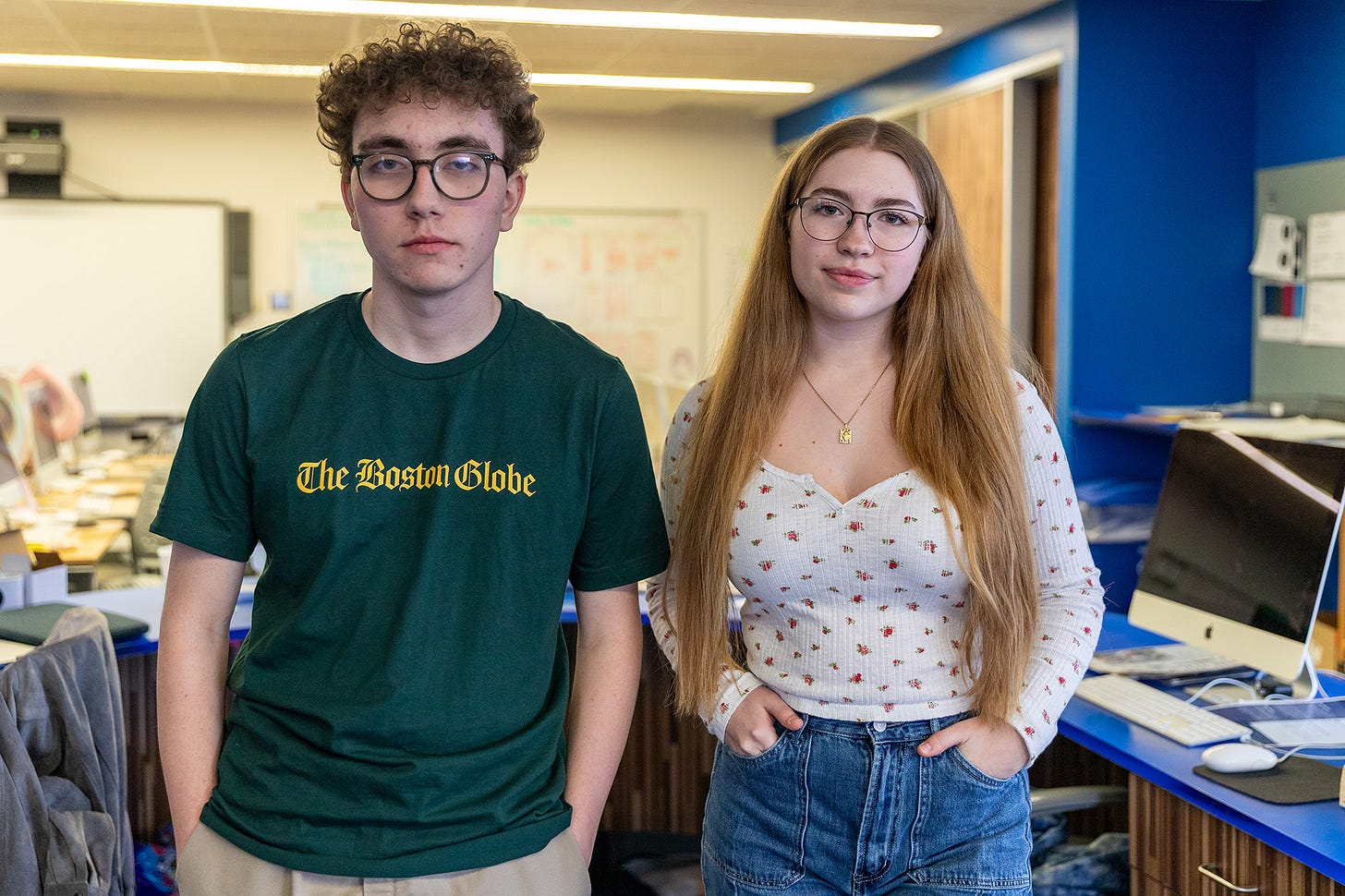How student journalists are making national news local
From Arkansas rice farms to campus Title IX policy, college reporters are connecting federal decisions to their communities

When the U.S. Agency for International Development was gutted, student journalists at The Arkansas Traveler realized the impact wasn’t limited to foreign countries — it hit close to home in Northwest Arkansas.
USAID typically purchases about $2 billion worth of American crops to send overseas, and Arkansas, the largest rice-producing state, supplies roughly 40% of that grain. Without the program, many local farmers could struggle to find a market for their crops.
“A lot of us have family who have either farmed before,” said Sophia Nabours, the newspaper’s news editor. “So it was pretty easy, I think, to grasp onto that because of how real it was for a lot of us.”
As headlines from Washington continue to ripple outward, student journalists are proving that local relevance doesn’t require proximity — just perspective.
News editors from The Traveler at the University of Arkansas and The Ithacan at Ithaca College shared how they’re connecting federal decisions to the people living in their own backyards.
For both newsrooms, it boils down to one thing: Knowing your audience.
Making it matter
In Arkansas, Nabours said localization has become a bigger newsroom priority this semester, following internal conversations about how national stories should be approached and made relevant to the university audience.
While national topics are regularly pitched at The Traveler’s weekly meetings, Nabours said they only move forward if they have a clear tie to campus — whether through faculty expertise, student perspectives or direct university connections.
When President Donald Trump addressed Congress in a joint session in March, for example, one reporter reached out to campus political groups in advance to line up post-speech interviews.
The goal was to capture a range of views from both Democratic and Republican students.
“Trying to take something that people are already thinking about outside of Arkansas and then bringing it to them is our No. 1 priority,” Nabours said.
The newsroom is also looking for local angles tied to nationally recognized occasions like Sexual Assault Awareness Month and International Women’s Day.
But not every national story makes the cut. The Traveler has covered tariffs, for instance, but skipped coverage of the recent California wildfires.
Asked how they decide what’s worth covering, Nabours admitted, “It’s honestly really difficult,” noting some stories just aren’t relevant enough to their readers.




Not forcing it
In New York, Eamon Corbo, assistant news editor at The Ithacan, said his team doesn’t try to localize every national story. Instead, they start local and pay attention to the national threads already tied to what’s unfolding on campus or in the community.
Their coverage of the return of Trump-era Title IX rules, for instance, started with a campus-wide email outlining changes related to transgender protections. From there, Corbo spoke with transgender students and explored the issue’s history and campus context.
With federal education policies already a topic of concern on campus and in the city, the paper ran several related stories, including investigations into both the college and the local school district.
When Kaeleigh Banda, The Ithacan’s head news editor, learned the local school district was investigated for a DEI event, she knew it would resonate with many education majors. Reaching out to them, she heard “genuine fear and concern for the future” of the education system.
“It really is just a lot of fear, but it’s also taking that fear and really helping people understand it and where to go from here and what those solutions can be and how we can provide a place for people to understand what’s going on locally, personally and nationally,” Banda said.
She added: “I think that brings so much focus and emotion to these larger issues because it makes us as students realize: ‘Wow, this really is impacting us individually and as a community.’”
Sourcing smart
Behind every localized story is a strategic and often challenging hunt for the right voices.
At The Traveler, Nabours said sourcing usually begins with the campus directory, which helps reporters connect with faculty experts or student organizations that can speak directly to the issue.
When a story on climate policy came up, for example, she pointed a reporter toward environmental science professors and sustainability clubs. From there, the piece would take on a more grounded and relevant angle, not just what it means, but what it means there.
She also pointed to government websites as reliable sources for data, numbers and statistics, emphasizing the importance of attribution. Hyperlinking to original sources, she said, builds trust.
“I don’t want the audience to wonder where we got it or how we got it,” she said. “So whether it’s an ‘according to’ or if it’s a direct link that people can go to and look at those numbers for themselves so they know we are trustworthy journalists and we’re not lying.”

Corbo, at The Ithacan, approaches sourcing by asking himself: Whose voices need to be heard for this story to matter?
That approach shaped their Title IX coverage, which began with a campus-wide email and evolved into a nuanced story after reaching out to transgender students, college administrators and faculty experts.
While it’s tempting to write something “fast and sensational,” he said it’s more important to approach national stories from a “compassionate, more thorough perspective.”
Still, convincing people to speak with a reporter isn’t always easy.
Banda recommended approaching sources with a learner’s mindset — not an interrogator’s. That, she said, helps lead to a real conversation.
Know your audience
Ultimately, it all comes back to understanding who you're writing for.
Banda said when hot-button issues come up, she asks classmates what they want to know more about and who they want to hear from.
Corbo echoed that, saying man-on-the-street interviews help them understand what people don’t know and what needs to be explained.
The Ithacan regularly hosts open office hours this semester. Just last week, the newspaper launched a campus conversation tour, which offers community members to tell them their needs and interests.
They’re “basing our journalism off of that and off of our community instead of just staying in our office, staying in our bubble and kind of guessing,” Corbo said.
💬 I want to hear from you! What’s one national issue you wish your campus news outlet would cover — and why does it matter to your community? Email me at nutgrafnews@gmail.com.
Story Spotlight:
🚨 National student media organizations warned of unprecedented threats in their “Student Media Alert” last week, recommending student media leaders revisit their policies on takedown requests and anonymous sources, particularly for those whose immigration status may make them targets for their lawful speech.
The Student Press Law Center said its legal hotline saw a 39% increase in calls last month compared to the same period last year.
SPLC Senior Legal Counsel Mike Hiestand, who worked there for more than three decades: “I am now warning student journalists about things I have never had to tell them before.”
🔥 Staffers at the Tideline, the student newspaper at Palisades Charter High School, are learning about journalism as they report on the aftermath of the wildfire. Their newsroom was destroyed, but the student journalists at Pali High kept reporting.
🏛️ Vermont’s Norwich University professor sued the university over attempts to suppress its student newspaper, alleging administrators pressured student journalists to quash critical stories.
🚫 Wake County in North Carolina is ending student journalists’ access to SNO Sites, a popular content-management platform for student newspapers, citing cybersecurity concerns. Years-worth of student work could be lost, and students may not be able to publish if they can’t find an online alternative to SNO.
✉️ Free speech and journalism organizations condemned the detention of Tufts University student Rumeysa Ozturk, reportedly based on opinions expressed in a student newspaper op-ed.
The Berkeley Beacon at nearby Emerson College stands with The Tufts Daily. “It makes us wonder as students, but also student journalists, who is here to support us?” the paper’s editors wrote.
Featured Opportunities:
The Montana Free Press is looking for an environmental reporting intern. Deadline’s April 7.
MassLive is seeking a summer news intern and a sports intern in either Springfield or Worcester, Massachusetts. Apply before April 11.
Hawai‘i Public Radio is offering a paid full-time summer internship with an application deadline of April 14.
The Asian American Journalists Association is accepting applications for its part-time summer internship until April 15.
The Athletic is looking for a college student intern for the fall. It’s remote, but some travel to NYC is required. Apply before April 18.
Feet in 2 Worlds, an immigration-focused outlet, is accepting applications for our 2025 summer internship until April 25.
The National Association of Hispanic Journalists is hosting a free student summit in Chicago April 26.
WTAE-TV in Pittsburgh is looking for a summer news intern.
CBS/Telemundo Austin is seeking a news intern.







